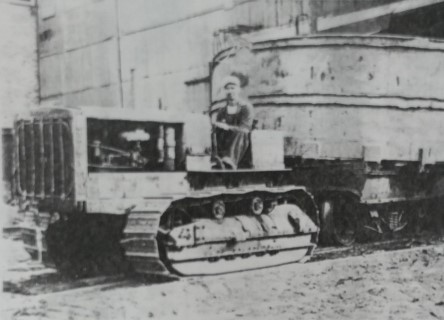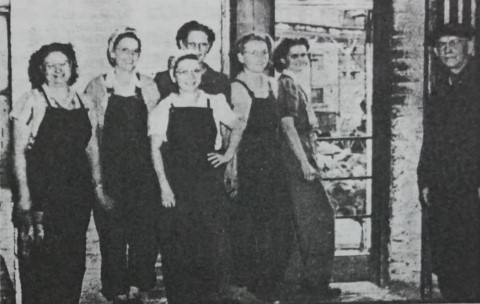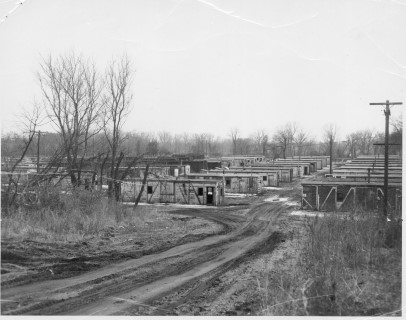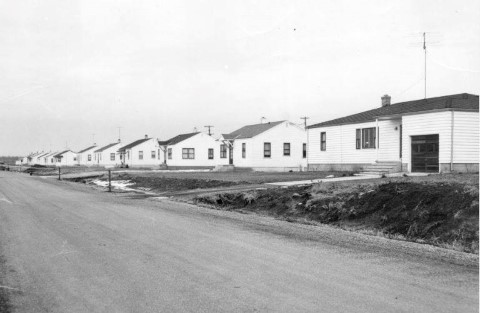Nail production and packing in the 1940’s.
Ordinarily rattlers may mean anything from a diamond back serpent down to a celluloid play toy for a baby. However, we have out “rattlers” in the Wire Mill and the only resemblance they have to the above is that they “shake” the daylights out of the nails.
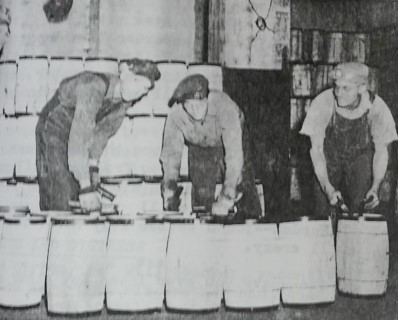
Otto Werderman, Paul Bartle, Joe Novak, and Orville Reynolds are cleating kegs of #8 common nails for export shipment.
After the nails have been fabricated on the nail machines, they are taken in push-carts to the scales and weighed. On the first floor they are dumped in a chute that carries them in a revolving drum which contains about 3 kegs of saw dust. This saw dust removes grease and nail whiskers (the little steel parts off of the points) and gives the nail a shiny finish.
Ray Berger, Everett Hill, and C. Spors are seen in the photograph carrying out the final process at the rattlers. You can see the nails coming down from the drum above. They drop into a pan where Berger pulls them over to a “keg-funnel” where the kegs are weighted, inspected, and headed. Sport, with hammer in hand, is just placing the keg head into position.
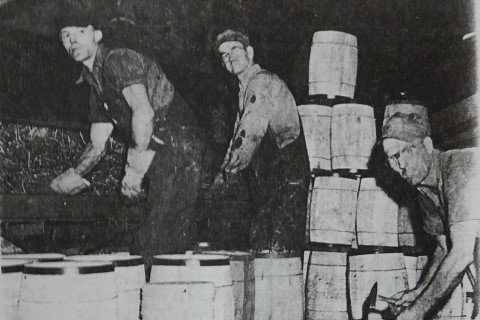
Ray Berger, Everett Hill, and C. Spors are seen in the photograph carrying out the final process at the rattlers.
Ray Berger, Everett Hill, and C. Spors are seen in the photograph carrying out the final process at the rattlers.
Keg heads with the company name, size, grade, weight, and description have already been prepared in advance by Tom Forehand. Tom’s printing press prints on wood the same as a regular printing press does on paper.
Where kegs of nails are to be shipped on export orders, a special steel cleat is clamped over the keg head and the rim. This cleat makes for a stronger barrel to withstand rough handling. In the picture, Otto Werderman, Paul Bartle, Joe Novak, and Orville Reynolds are cleating kegs of #8 common nails for export shipment. Some of our heaviest government directives on war orders have been for nails. The men in this department have made a substantial contribution to the war effort.

